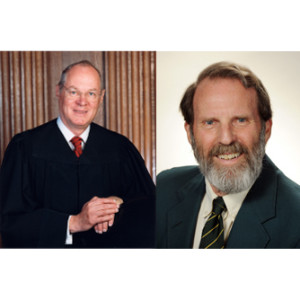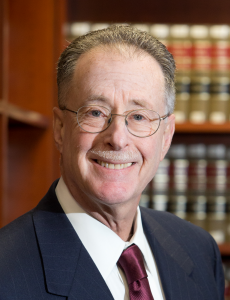Tyson Foods, Inc. v. Bouaphakeo, 577 U.S. ___ (2015) (Kennedy, J.).
Response by Dean Alan Morrison
Geo. Wash. L. Rev. Docket (Oct. Term 2015)
Slip Opinion | New York Times | SCOTUSblog
This class action was brought against Tyson Foods for failure to pay overtime required by the Fair Labor Standards Act because it excluded time spent by its employees in donning and doffing special protective clothing that they had to wear while working on the line of a pork processing plant. There was no question that Tyson did not pay the workers for that time, but it claimed that those activities were not compensable as a matter of law, a position rejected by the jury and the two lower courts, and not challenged in the Supreme Court. Because not all employees wore the same gear, they took somewhat different times to take it off and put it on, and get to and from their stations. That presented a potential problem for the class in meeting the predominance requirement of Federal Rule of Civil Procedure 23(b)(3)3 under which certification was sought. Plaintiffs overcame one hurdle by successfully contending that the legal issue of whether the activities in question were compensable was a common issue that applied to everyone. But if there had to be separate trials at which each of the 3344 class members had to testify to how much time he or she spent, class issues would not predominate.
Plaintiffs’ response was to hire an expert who studied the time spent by employees in doing the contested work, including 744 videotape observations, from which he reached conclusions as to the average time spent for each major category of workers. When the case arrived at the Supreme Court, Tyson had two major problems in its claim that there was insufficient evidence to make a determination that these averages were not a valid means of assessing class-wide damages. First, despite the requirement of the law and a specific prior court injunction, Tyson did not keep time records from which it could refute the averages. Second, it could have, but did not, challenge the qualifications of plaintiffs’ expert under Daubert,4 which narrowed the kind of objections that could be made to his testimony. In addition, there was the decision in Anderson v. Mt. Clemens Pottery Co.,5 which approved similar kind of statistical evidence in an FLSA case in which the defendant lacked the required time records.
Tyson was mainly left with the claim that the decision in Wal-Mart Stores, Inc., v. Dukes,6 in which the Court decried what it called “Trial by Formula,” precluded plaintiffs from using such evidence in this case.7 Justice Kennedy had no trouble distinguishing Wal-Mart on a number of grounds, which can now be used by lower courts who are looking for ways to allow class certifications in cases like this that cry-out for class treatment. To be sure, there are obstacles that must be overcome, but the fear that Wal-Mart put an end to the use of all statistical evidence has vanished, certainly in cases like this, but probably in other situations as well because of the majority’s conclusion that the use there depends “on the facts and circumstances particular to those cases.”8 The dissent reviewed the record in detail and, in a ruling that would have little effect beyond this case, found that the district court did not satisfy its obligation to assure that the statistical evidence was sufficiently reliable to establish the claimed damages in this case.
The second issue in the petition had the potential for an even greater impact. As presented, Tyson argued that it was a violation of Federal Rule of Civil Procedure 23 and Article III of the Constitution to certify a class in which it was likely, if not certain, that some members of the class would not be entitled to recover anything. It was agreed in this case that, even with adding the donning and doffing average times, not all Tyson workers would have worked overtime, which was the sole claim in the case, yet the class as certified included all those who had worked at this plant during the relevant time frame.
If Tyson’s position in its cert petition had been upheld, it might have dealt a near-death blow to many class actions because it will generally be impossible to know in advance who will actually be able to prove a right to recover until the facts can be established in discovery and at trial. Moreover, in other cases, for example where the claim is that women or minorities were denied promotions for unlawful reasons, it is clear that not everyone who applied could have been selected, and yet all of them should have a chance to show that they would have been chosen, as opposed to others in the class, once the discrimination was eliminated.
Perhaps sensing that it had over-reached in taking this position, Tyson backed off, and in its brief it argued only that there must be some method to identify those who are, and are not, entitled to recover and that no such method was shown here. Plaintiffs, wisely, did not contest Tyson’s premise, but contended that they in fact had such a method. Moreover, since the district court had not distributed the lump sum awarded by the jury, plaintiffs argued (and the Court agreed) that the allocation could be made on remand. Chief Justice John Roberts, in a concurring opinion, agreed that the Court should not decide that question now, but he expressed doubt that such an allocation could properly be made in this case.9 One fact related to this allocation issue surely hurt Tyson and may well plague it on remand: plaintiffs had suggested that the trial be bifurcated with only liability tried initially. Tyson objected, and the trial judge agreed with Tyson. Although, as Chief Justice Roberts observed in his opinion concurring on this issue, Tyson cannot waive the requirements of Article III, it will surely be at a disadvantage in objecting to the proposed distribution plan because of this tactical decision.
Having spent a very significant sum for its lawyers to take the case to the High Court, one wonders whether Tyson will care enough to want to fight the allocation issue on remand. The total amount of the jury award was less than $3 million, and Tyson can only get that back if it is able to destroy all of the plaintiffs’ allocation proposals before a judge who is unlikely to be favorably disposed to Tyson. Meanwhile, statutory attorneys’ fees will continue to mount, as will the cost of Tysons defense. Even if Tyson won, the decision would not be likely to set a useful precedent. Moreover, the majority decision provides a path for class counsel in future FLSA cases to deal with problems like this. As for getting the Court to look at this issue again in this or another similar case, that does not seem likely because Justice Antonin Scalia, the author of Wal-Mart, is no longer a member of the Court.
One aspect of the second ruling is worth a mention, but is not answered by the opinion. It is clear that at least by the time of trial, plaintiffs must show that they have a method by which they can (reasonably, if not perfectly) assure that only those who are entitled to recover do receive compensation. What is not clear is what showing on this issue must be made at the class certification stage. In my opinion, at least in the lower courts, plaintiffs will be required to give the court some kind of plan that would enable it to have some comfort that the separation of the wheat from the chaff can be accomplished at trial, but the details of such a plan can be developed down the road. Defense counsel will push for more of a showing at the certification stage, but it seems unlikely that the Supreme Court will revisit this specific issue any time soon. Indeed, having been twice told this term that big issues that might have major impacts on class actions were properly presented, and having twice concluded that those issues were not there, the Court should be very cautious in accepting cases from defense counsel that promise major class action rulings, only to find out that the big questions are not actually before the Court.10
1. Alan B. Morrison, Response, Campbell-Ewald Co. v. Gomez, Geo. Wash. L. Rev. Docket (Jan. 23, 2016), http://www.gwlr.org/campbell-ewald-co-v-gomez-a-temporarily-failed-pick-off/.
2. Tyson Foods, Inc. v. Bouaphakeo, No. 14-1146, slip op. (U.S. Mar. 22, 2016).
3. Fed. R. Civ. P. 23(b)(3).
4. Daubert v. Merrell Dow Pharmaceuticals, Inc., 509 U.S. 579 (1993).
5. Anderson v. Mt. Clemens Pottery Co., 328 U.S. 680 (1946).
6. Wal-Mart Stores, Inc., v. Dukes, 131 S. Ct. 2541 (2011).
7. Id. at 2561.
8. Tyson Foods, Inc., at 15.
9. Tyson Foods, Inc., (Roberts, C.J., concurring).
10. Another case which promised a big impact–the extent to which Daubert hearings were required at the class certification stage–also fizzled out in Comcast Corp. v. Behrend, 133 S. Ct. 1426 (2013).
Recommended Citation
Alan B. Morrison, Response, Tyson Foods, Inc. v. Bouaphakeo, Geo. Wash. L. Rev. Docket (Mar. 22, 2016), http://www.gwlr.org/tyson-foods-inc-v-bouaphakeo/.




